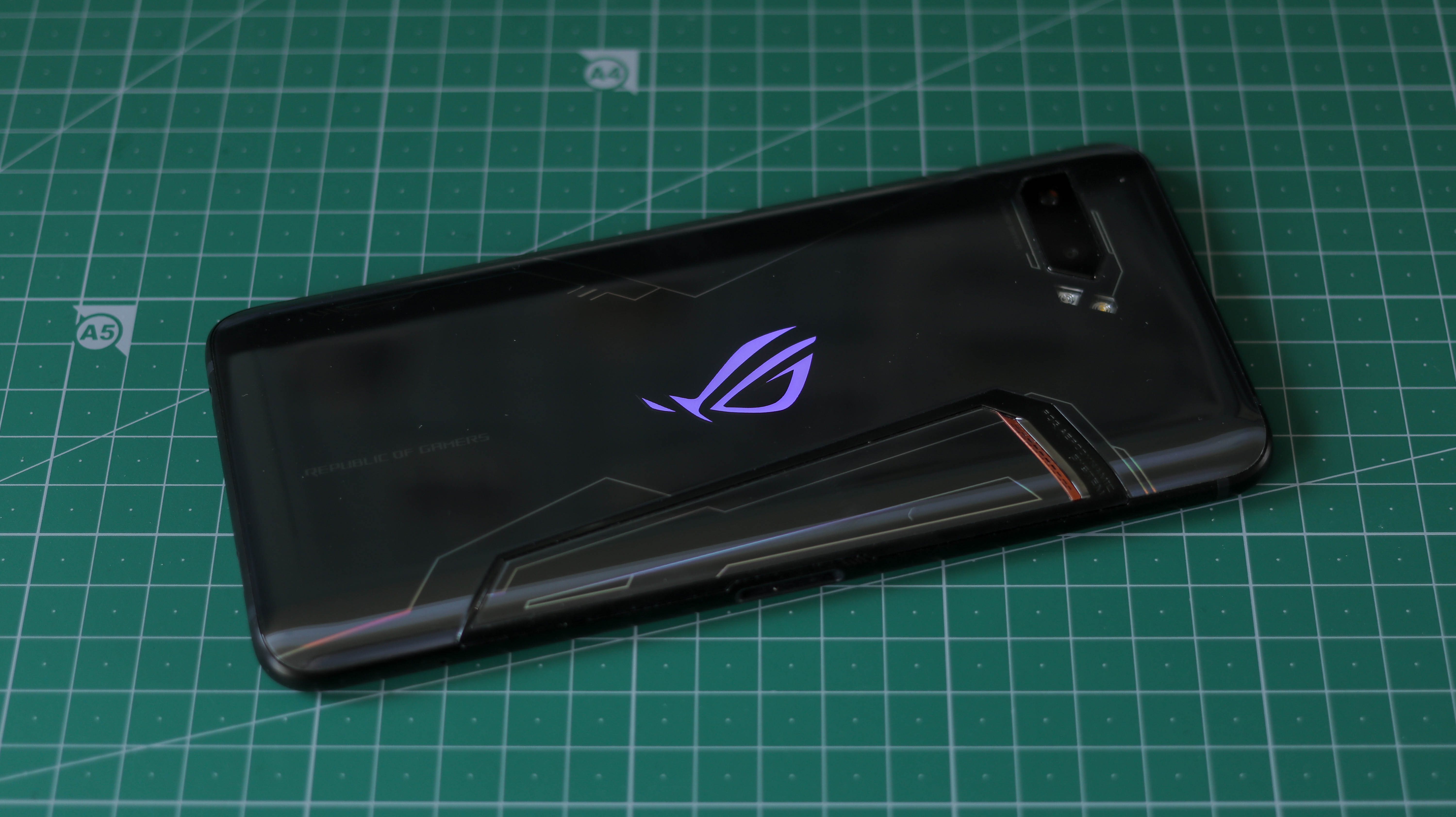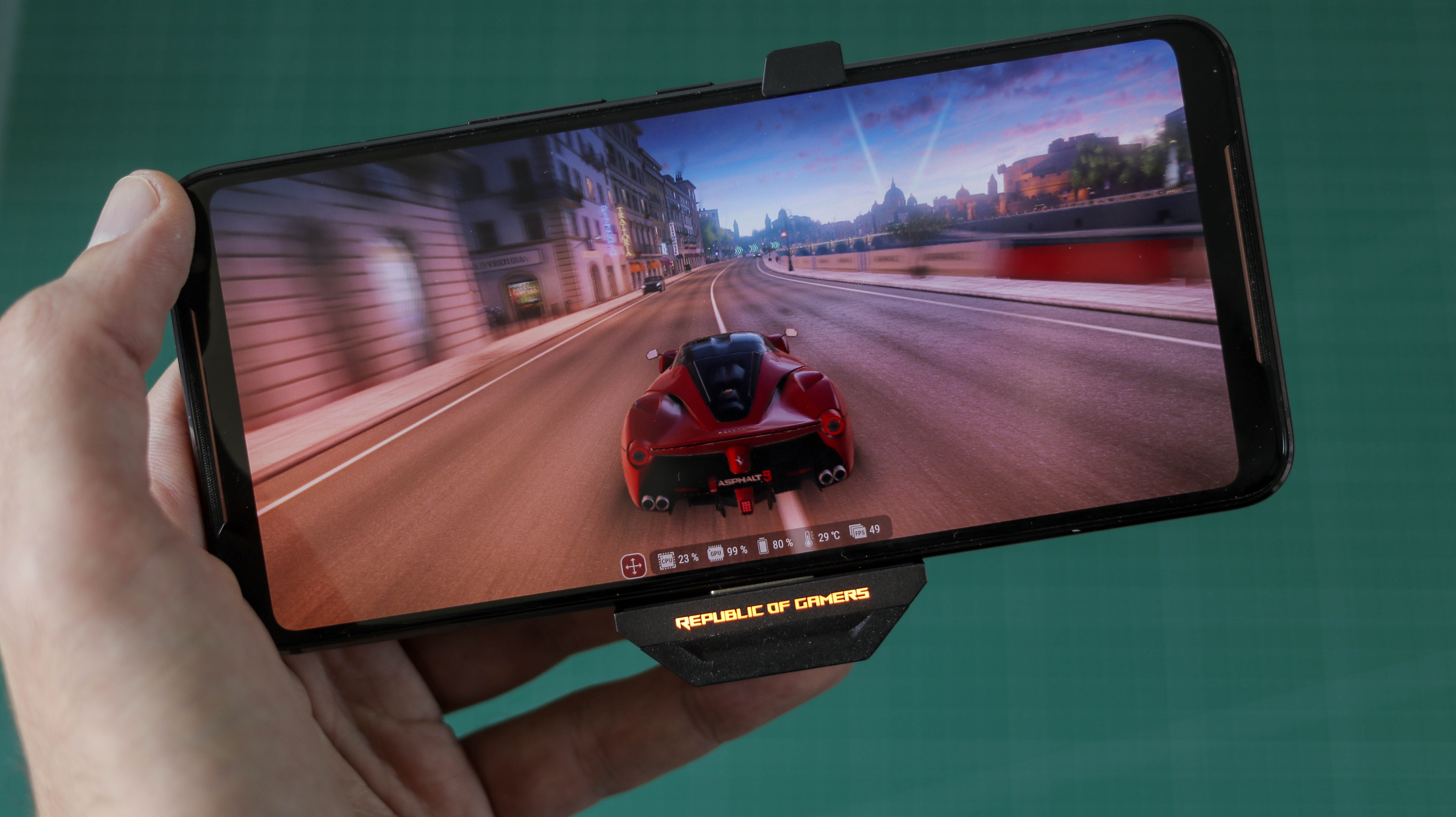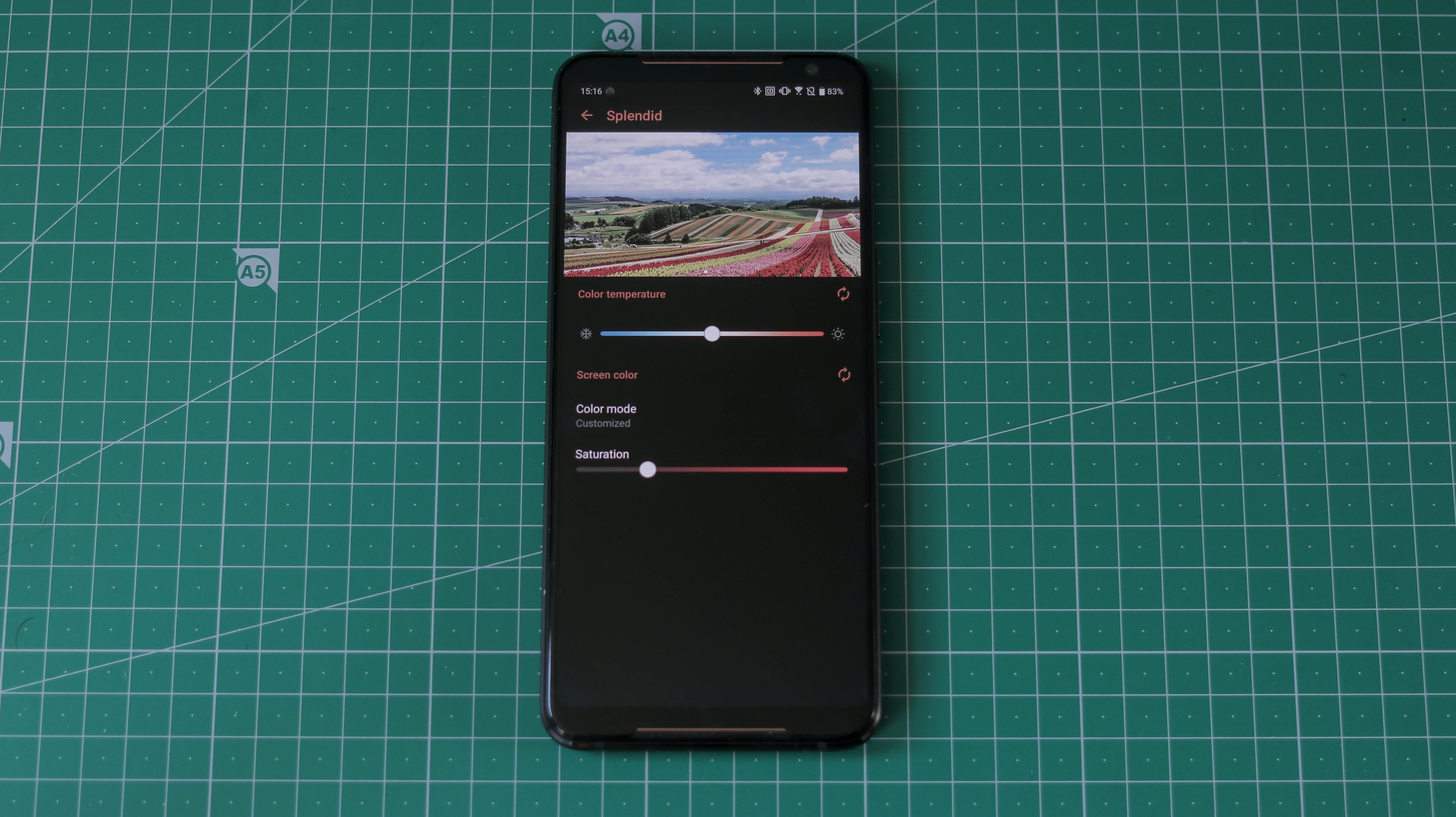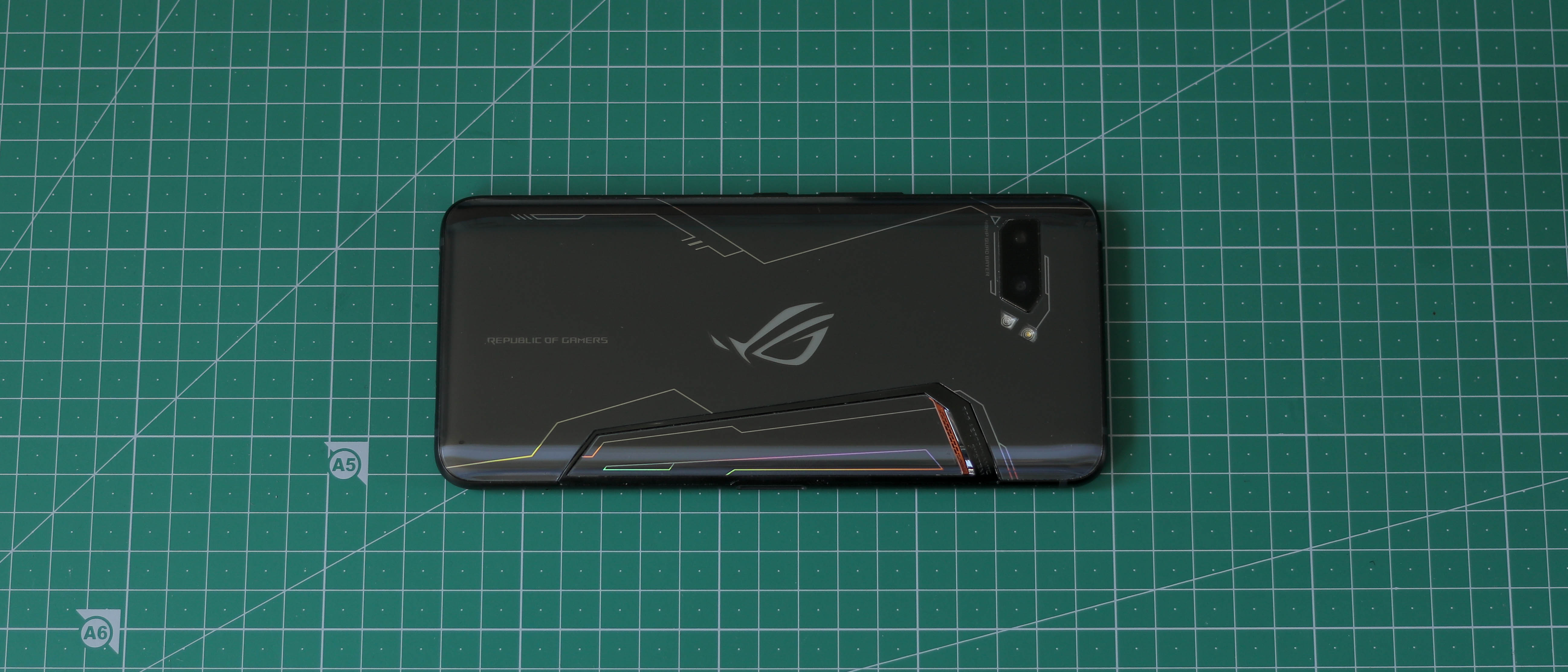TechRadar Verdict
The Asus ROG Phone 2 is the ultimate gaming phone, with a superbly smooth screen, more power than you'll know what to do with, and brilliant battery life. Those features, coupled with its massive storage space, mean the ROG Phone 2 is a fine choice even if you're not into gaming - just as long as you're okay with the design.
Pros
- +
Fantastic 120Hz AMOLED screen
- +
Excellent battery life
- +
Masses of storage
Cons
- -
No waterproofing rating
- -
No wireless charging
- -
Aggressive design won’t be for all
Why you can trust TechRadar
Asus got a lot right with its original ROG Phone, and while its successor shares very similar styling, a quick look at the ROG Phone 2’s spec sheet shows everything has been turbo-charged this time around.
The Asus ROG Phone 2’s components are across-the-board monstrous; it has a 6,000mAh battery, 12GB of RAM, 512GB of storage, a Snapdragon 855 Plus chipset overclocked to 2.96GHz, 6.59 inches of AMOLED screen with a 120Hz refresh rate, and a beefy, 240g body.
In short, if the ROG Phone 2 was an X-Men character, it would be Juggernaut - huge amounts of power wrapped up in angry looking armor. But do you really want a juggernaut in your pocket day-in-day-out? We spent a fortnight with the phone, and for us at least, the answer is a resounding 'yes.'
Asus ROG Phone 2 release date and price
- Available from October 8, 2019
- Costs $899 / £829.99 for 512GB
- Australian availability TBC
The Asus ROG Phone 2, announced in July 2019, starts at $899 / £829.99 (roughly AU$1,500) for the 512GB storage option, with an expected shipping date of 8 October.
No carrier or network availability has been confirmed as of yet; the primary retail channel online for pre-orders is Asus’s own online store. We’re also still waiting to find out when the phone will be available in Australia, and how much it will cost there.

Design and display
- Big, intimidating design
- 1080 x 2340 display with 120Hz refresh rate
The ROG Phone 2 is huge, but in a very different way to other huge phones like the Huawei Mate 20 X and Samsung’s Galaxy Note 10 Plus. It’s imposing in both stature and design, with Decepticon-esque glyphs, an intimidating RGB lighting ROG logo and a heavy-weight body.
Starting with weight, the ROG Phone 2 comes in at a hefty 240g - compare that to the 226g iPhone 11 Pro Max and the 196g Samsung Galaxy Note 10 Plus. Just like those handsets, the ROG Phone 2 is a glass/metal sandwich, though it features a matte, beveled aluminum frame as opposed to a smooth, curved stainless steel frame, and feels less slick as a result.
With curved glass around the back, while it’s big, the Asus ROG Phone 2 still feels comfortable in hand, and the metal frame stops it from being too slippery.

The ROG Phone 2 has a headphone jack complete with a 24-bit DAC, and no less than two USB-C ports - one on the bottom, and one on its right side (when the phone is in portrait orientation). There are also volume and power buttons on the right edge.
The giant display is protected by Gorilla Glass 6 and book-ended by stereo speakers, with a front 24MP camera at the top right. And while the glass might be tough, one form of protection you don't get is any sort of water resistance rating.
With its 19.5:9 aspect ratio and massive size, the ROG Phone 2 is a tall bit of kit that makes an impression in the pocket as well as the hand. Skinny jeans are out if you pick one of these up, and even if your trousers have a bit of give, you’ll still know it’s there.
Display tech doesn’t get much better than AMOLED, as used here, and when you consider the ROG Phone 2’s incredibly fast 120Hz refresh rate and 1ms response time, everything comes together very well.

High refresh rate displays don’t tend to be as bright as standard 60Hz smartphone screens, but the Samsung panel Asus has had manufactured for the ROG Phone 2 gets brighter than 600 nits. While that's not quite the 1,000 nits of the OnePlus 7T, it's still very bright and makes for excellent outdoor viewing.
The screen's 120Hz refresh rate isn’t just there to make sure compatible games look slicker and feel more responsive - it also makes the whole phone feel that bit faster, with scrolls and swipes gliding rather than juddering. Going back to a 60Hz display like that of the Samsung Galaxy S10 will be noticeably less smooth, even if other aspects of the S10's display look better.
A gaming display calls for a host of customization options within the settings, and Asus doesn’t disappoint. Screen color mode options are extensive and offer granular control over saturation and viewing profiles. You can also drop the refresh rate to 90Hz or 60Hz, change the system color scheme by enabling a dark mode, and toggle an always-on display on or off.

With a resolution of 1080 x 2340, the ROG Phone 2 has a pixel density of 391 pixels-per-inch, making it sharper than the iPhone 11, but less sharp than most Android flagships.
With our worse than 20/20 vision, we didn’t find ourselves longing for it to be sharper in our time with it, but if you’re a stickler for a pin-sharp picture, you might want to look at a QHD+ phone like the OnePlus 7 Pro, or even the 4K Sony Xperia 1.
Ultimately, the ROG Phone 2 has a sensational display and offers plenty of customization within the settings, not to mention the smoothest AMOLED scrolling and gaming available now.
Basil Kronfli is the Head of content at Make Honey and freelance technology journalist. He is an experienced writer and producer and is skilled in video production, and runs the technology YouTube channel TechEdit.

